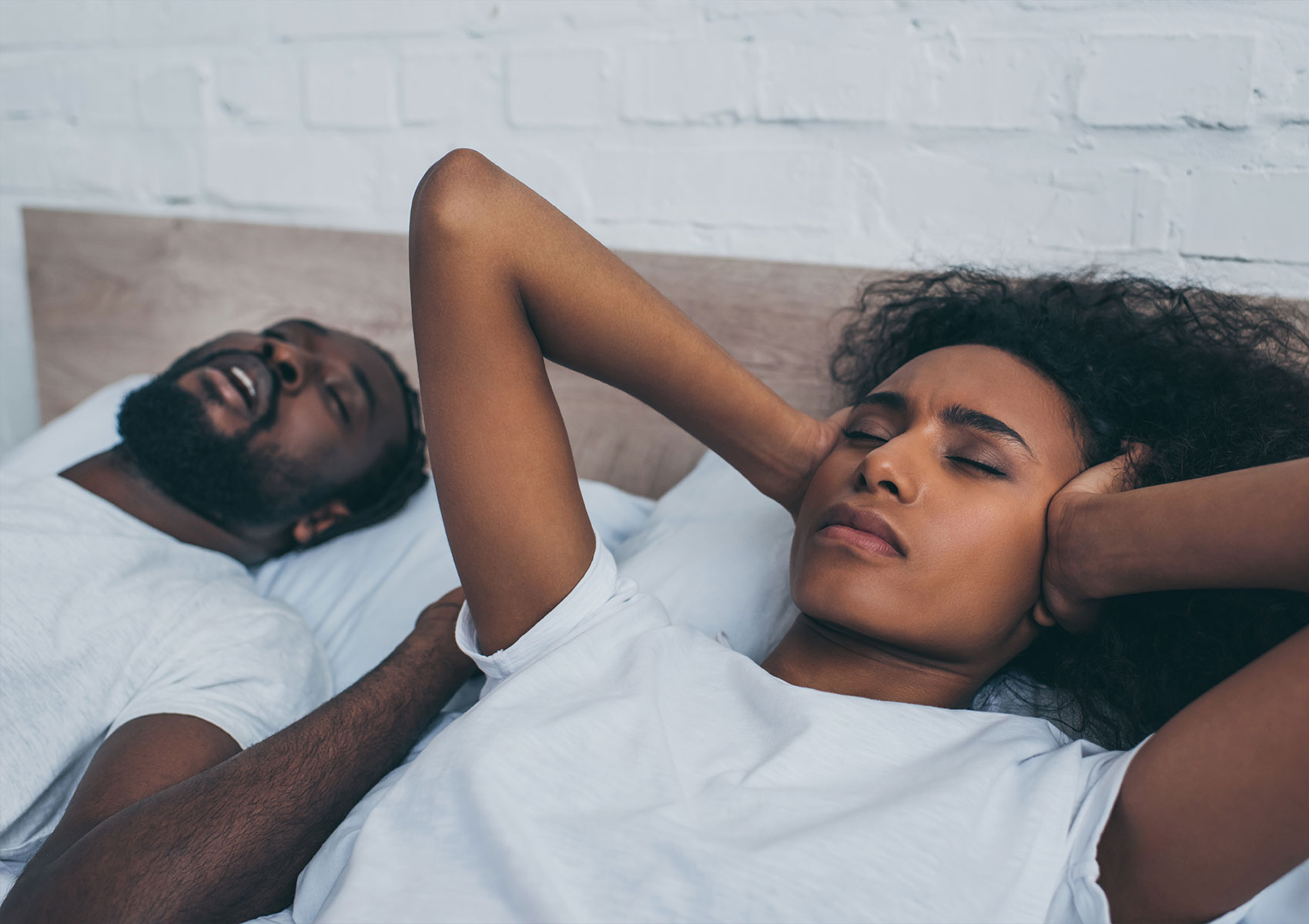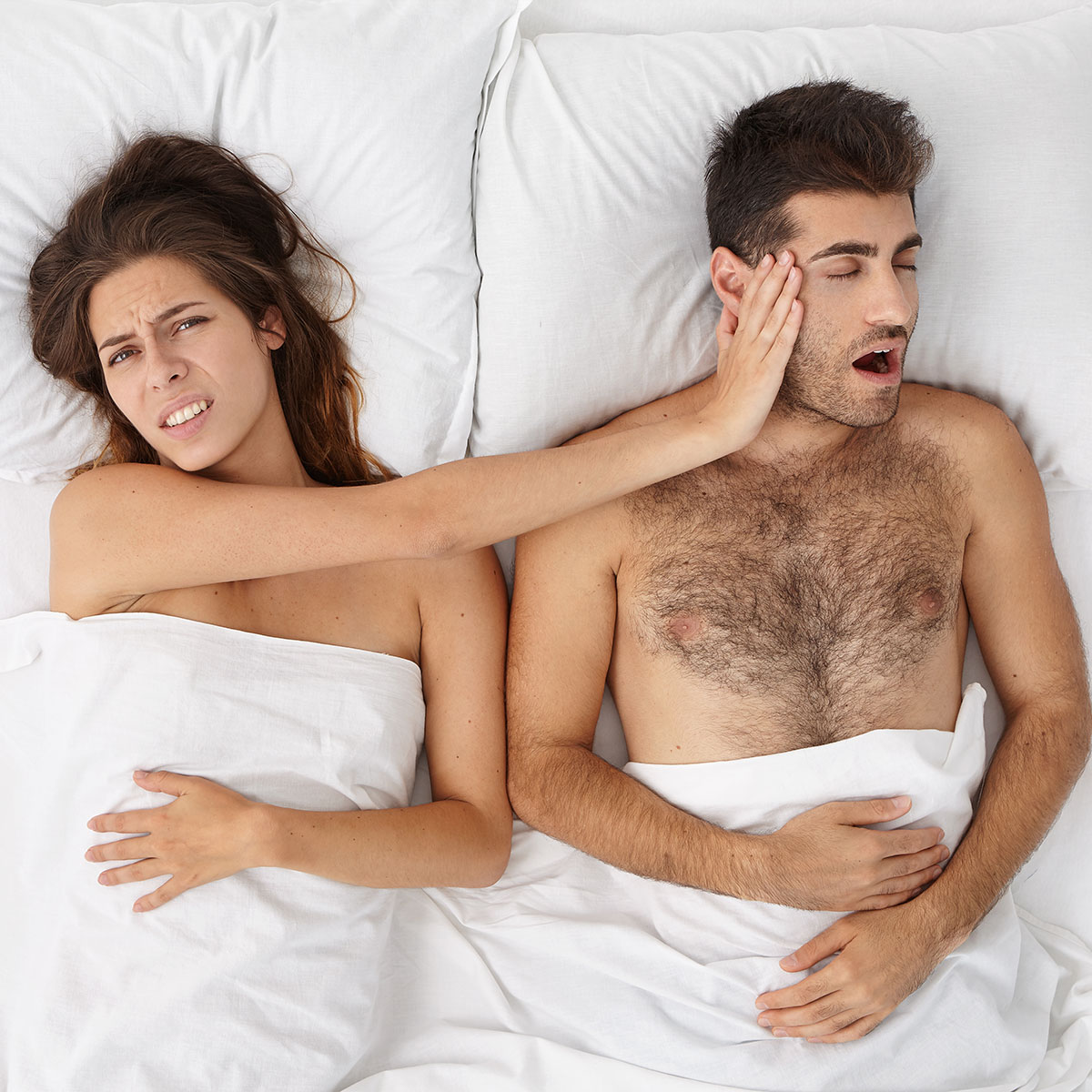According to an August 2014 article published in the Cleveland Clinic Journal of Medicine an estimated 17% of the general adult population has obstructive sleep apnea

What is Obstructive Sleep Apnea (OSA)?
Apnea is a greek word meaning “no breath”. When you sleep and experience a complete collapse of the upper airway caused by relaxation of the muscles controlling the soft palate and tongue you have an apnea or a total cessation of air flow in the throat.
When you sleep and experience a partial collapse of the upper airway you have a hypopnea causing upper airway tissue vibration also known as snoring.
OSA is classified as being mild, moderate or severe based upon the number of apneas or hypopneas per hour of sleep. 5 to 14 per hour is considered mild, 15-30 is considered moderate and 30 or more per hour is considered severe.
Common Signs & Symptoms Of OSA:
- Irregular Breathing during Sleep
- Nighttime Gasping, Choking or Coughing
- Frequent Nighttime Urination
- Morning Headaches
- Disruption of bed partner’s sleep
- Excessive Daytime Sleepiness
- Dry Mouth
- Drooling
- Gastroesophageal Reflux
- Depression
- Lack of Energy
Important! If you are suffering from any of these symptoms, see a doctor right away do not try to diagnose yourself. There are other more serious conditions which share the same symptoms.
Prevalence of Sleep Apnea
According to an August 2014 article published in the Cleveland Clinic Journal of Medicine an estimated 17% of the general adult population has obstructive sleep apnea. Nearly 1 in 15 adults have at least moderate sleep apnea and approximately 85% of those individuals are undiagnosed and untreated.
Common Conditions Associated With OSA
- Approximately 76% of congestive heart failure patients have OSA
- 49% of atrial fibrillation patients have OS
- Anywhere from 30 to 83% of patients with hypertension have OSA
- 48% of type 2 diabetes sufferers have OSA which may have a causal role in the development of type 2 diabetes
- 86% of obese type 2 diabetes patients have OSA
- 65% of stroke patients have OSA. Moderate to severe sleep apnea triples stroke risk in men
The Importance of Seeking Help
According to the aforementioned Cleveland Clinic article people with OSA are at increased risk of nocturnal sudden cardiac death. Sleep apnea is also associated with an increased overall death rate, and the higher the apnea-hypopnea index, the higher the death rate, even after adjusting for age, sex, body mass index, and underlying cardiovascular risk, with findings most pronounced in men under age 70.
How We Treat Sleep Apnea
Continuous Positive Airway Pressure (CPAP)
Continuous positive airway pressure (CPAP) is the frontline treatment for obstructive sleep apnea. CPAP keeps your airway open during the night by gently providing a constant stream of air through a mask you wear while you sleep. This will eliminate the breathing pauses caused by OSA, so you will no longer snore or make choking noises in your sleep. You will be able to sleep through the night without your body waking up from lack of oxygen.
When you use CPAP, you will feel more alert during the daytime. Your mood will improve and you will have a better memory. CPAP prevents or even reverses serious health problems associated with sleep apnea such as heart disease and stroke. Your partner may even sleep better because you will stop snoring.
CPAP comes with a machine, a hose for air and a mask. Most machines are small – about the size of a tissue box – lightweight and relatively quiet. You can keep the CPAP machine on your nightstand or at the side of your bed.
Research shows treatment of OSA using CPAP therapy improves daytime blood pressure, heart rate and reduces blood glucose levels.
Oral Appliance Therapy
Oral Appliance Therapy involves the selection, fitting and use of a specially designed oral appliance that maintains an open, unobstructed airway when worn during sleep. Oral appliances reposition and maintain the lower jaw in a protruded position during sleep. This opens the airway by indirectly pulling the tongue and soft tissue behind the tongue forward.
Weight Loss
Weight changes can significantly affect the severity of sleep apnea, perhaps even leading to a reassessment of the degree of OSA and CPAP requirements.
Avoiding Certain Medications
Benzodiazepines, narcotics, and alcohol reduce upper airway muscle tone and should be avoided. No medications are associated with improvement of OSA.
Positional Therapy
Sometimes sleep apnea is much worse when lying on your back compared to sleeping on your side. In such instances the use of a “bumper belt” which forces you to sleep on your side may be a sufficient remedy for OSA.
Surgical Interventions
Some patients with sleep disordered breathing may be candidates for a surgical intervention. At The Center for Sleep Medicine a surgeon board certified in sleep medicine is available to evaluate patients interested in exploring a surgical option.

Related Resources
Free Download: Sleep Apnea Facts & Figures
Obstructive Sleep Apnea occurs when the throat completely or partially collapses causing interrupted sleep. Snoring occurs when the throat is partially closed and the air passing through causes the throat to vibrate.
